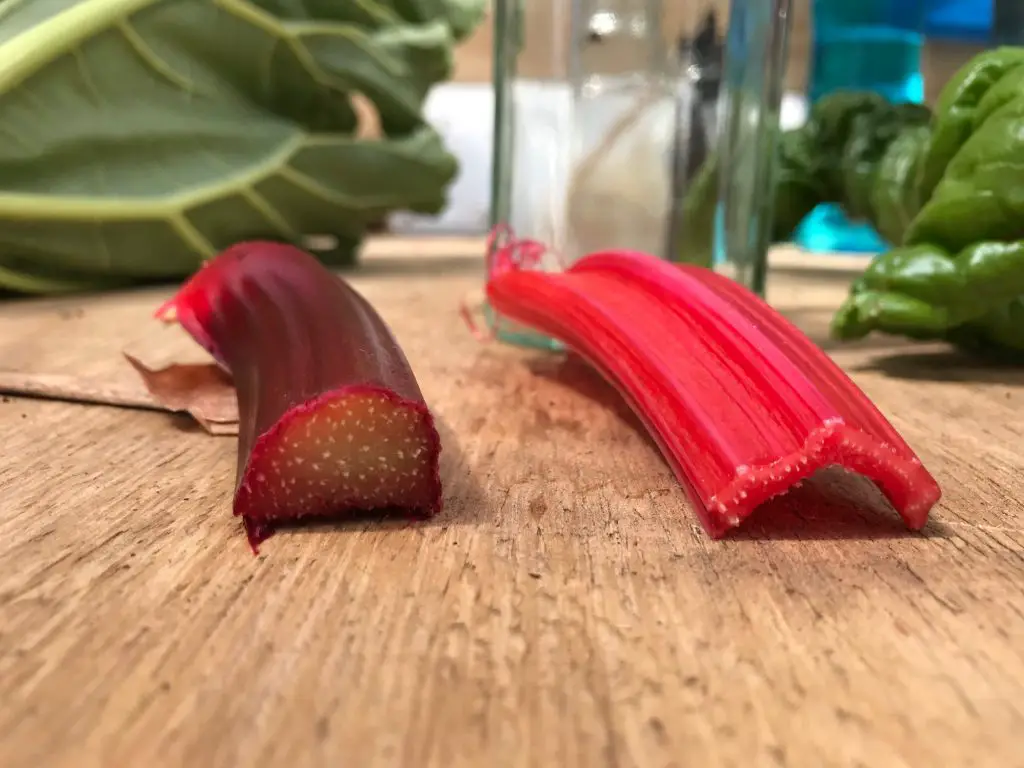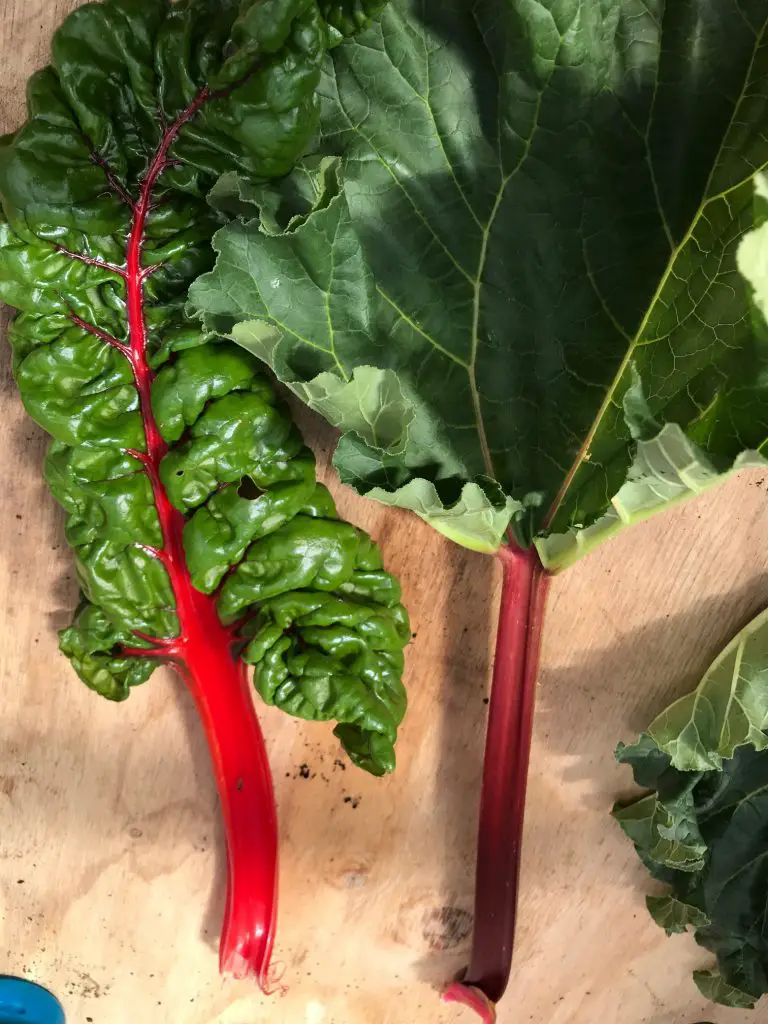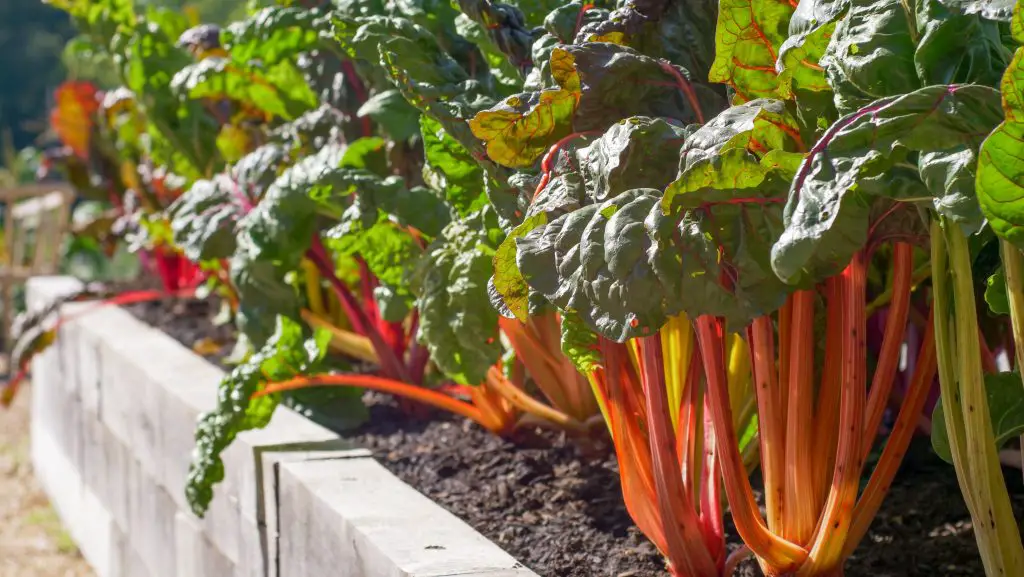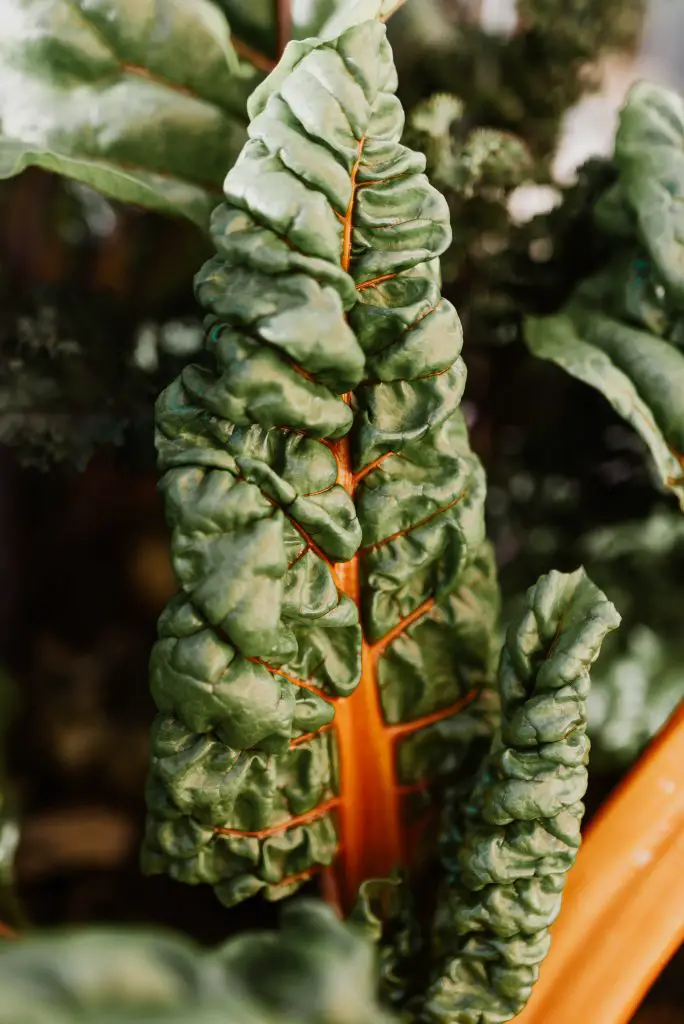Is Swiss Chard And Rhubarb The Same Thing? Swiss Chard and Rhubarb are popular plants that are grown widely in gardens around the world. They are both vegetables that have large leaves that have a similar appearance which can make things pretty confusing. So how do you tell them apart?
Swiss Chard and Rhubarb are different species from separate plant families despite having similar physical features. There is a range of Swiss chard varieties with different colored stalks which include Red, Yellow, Green, and White, whereas Rhubarb is the most common commonly has red stalks though there are some varieties that also have green stalks. The red stalk varieties of each plant are most commonly confused.
Despite the similarities, Swiss Chard has distinct features which can be used to distinguish it from the Rhubarb. The first feature is the shape of the stalk. Rhubarb has a triangular-shaped stalk that has a smooth but relatively dull appearance, whereas the stork of the swiss chard is generally thinner in appearance and often has a ribbed surface that is shiny. A cross-section of the storks of the two plants is shown in the image below.

In addition to having shiny storks, the leaves of Swiss Chard also have a glossy appearance leaves. The leaves themself are generally a darker green color and generally more undulating than the relatively flat leaves of the Rhubard. The other distinctive feature of Swiss Chard is that color with the stalk can be clearly seen in the leaves as a result of the veins in the leaves, whether as rhubarb tends to have less pronounced veins that are white rather than red or green.
The way that the leaves connect to the storks is also a defining difference between the two plants. Rhubarb are connected to the stork only by the very top of the stork, fanning outward at this point, whereas the stork Swiss Chard runs through the centre of the leaves becoming progressively thinner the closer you get to the tip of the leaf. See the image below.

The other distinctive feature is that the storks of the rhubarb come up at different points from on the crown whereas Swiss chard has a central growing point from which successive storks are produced, with the newest leaves coming up from the center. However, this feature can some times difficult to see if the Swiss Chard plants are in a clump.
Taste and Culinary Uses
Aside from the differences in their physical attributes, Rhubarb and Swiss Chard also have a different taste and uses.
Swish Chard originated in the Mediterranean region and has been grown for centuries by the Romans. As a result of the long history in this region, it has become a staple in Mediterranean dishes. The storks and the leaves of Swiss chard are edible and are most commonly eaten cooked though the leaves are sometimes eaten raw in salads.
It has an earthy flavor that is similar to spinach and it is frequently used as a substitute for it and other leafy greens. When the leaves are eaten raw the texture tends to be a bit leathery and lacks the crunchy consistency of some lettuces. It is also has a slightly bitter taste that is removed when the plant is cooked.
However, when cooking with Rhubarb only the stork can be used as the leaves contain a high amount of oxalic acid which is poisonous. Unlike Swiss Chard, Rhubarb is almost exclusively used to make dessert dishes such as pies. The plant itself has a tart and acidic flavor which is most commonly combined with sugar and other fruits such as apples and berries.
The storks can be fibrous and are most commonly cooked rather than being eaten raw. To reduce the fibrous nature of the storks plant is sometimes forced. The forcing of rhubarb is when the plant has all light excluded from the plant. This process produces tender pale pink shoots at an earlier stage of the year than growing rhubarb normally. The phenomenon was discovered by accident in 1817 when a couple of rhubarb plants were covered over with soil during some routine drainage works.

About Swiss Chard
Swiss Chard (Beta Vulgaris) is a leafy vegetable that belongs to the beet family, which includes beetroot, and sugar beets. Because of its highly nourishing leaves, it is considered as one one of the healthiest vegetable. As the name suggests, it is abundant in Switzerland, but ironically, its exact native place is in the southern part of the Meditteranean region.
The plant itself is a biennial plant, meaning it has a 2-year cycle before it dies off. The plant is normally grown from seed which is planted usually in mid-spring to early to mid-summer. Planting seed any later than that in most climates usually means that the plant does not get large enough prior to winter to allow a reasonable harvest to be taken.
The plant itself takes a little while to get going, however, once it does it produces prolifically through the Autumn and winter provided it is not too cold. Swiss chard can survive down to 15°F (-9°C) however to improve the quality of the leaves it is best to provide some form of protection to the plant, such as a row cover.
Once the weather warms up at the end of winter the plant will normally go to seed relatively quickly. To ensure a year-round supply it is advisable to start the plant off as early as possible. However, to prevent there being a break in supply it is usually necessary to sow seeds around 4 to 6 weeks prior to the last frost.
As it is relatively cold seeds will need to be sown indoors in a seed tray. However, as the temperatures in a house can fluctuate we recommend using a heated propagation tray as they provide the ideal growing conditions. There are many of these products on the market that will do the job, however, the one we recommend is the iPower Heating Seed Starter Germination Kit which is shown in the picture below. The reason is that it has a vented humidity dome and is relatively inexpensive. Click on the link to see the current price on Amazon.

To plant seeds start by filling the tray up with seed raising mix as it is ideally suited to the job. The seeds should be sown at a depth of 0.5 inches (1 cm) and they will take 7 to 10 days to emerge. They will require a further 4 to 6 weeks in the tray before they are large enough to plant out into the garden. At this stage, the plants will be between 2 and 4 inches tall.
When planting the seedlings out into the garden they ideally should be placed in a sunny location 1 ft apart. Swiss chard will also tolerate shady locations as well, however, the growth rate will be slower. To reduce the chances of slug and snail attack it is advisable to sprinkle snail pallets around the young seedlings.
In terms of soil conditions, Swiss chard prefers rich moist but free-draining soil that is slightly acidic. If the soil is relatively sandy or has a high clay content it is advisable to add compost.
Once the plant is in the ground apply a thick layer of mulch to help suppress weeds and retain moisture. When the plant is established it will require very little maintenance apart from regular watering. It can be harvested at any stage provided that the leaves are of sufficient size.
About Rhubarb
Rhubarb (Rheum Rabarbarum) is a fleshy, edible fruity stalk of the species of Rheum, the family of Polygonaceae. Historically, various plants are call rhubarb in English, and its place of origin is unknown. Although rhubarb is a vegetable, it is widely put on the same culinary recipe as fruits. The stalks are typically cooked with sugar and add in pies, crumbles, and other sweet delicacies.
Many Rhubarb cultivars have been specially developed for human consumption. These are the rheum hybrids that are recognized by the Royal horticultural Society as high performing varieties;
- Grandad’s favourite
- Reed’s Early Superb
- Stein’s Champagne
- Timperley Early
Rhubarb is now widely cultivated. Traditionally, it is only available in the consumers market during middle of spring. But because of greenhouse production, supply of edible rhubarb is available throughout the year. Rhubarbs cultivated in a hothouse (heated greenhouses) are market to the public in early spring, before outdoor cultivated are available. Hothouse rhubarb is sweeter-tasting, has brighter crimson stalks, and is tenderer than the traditionally grown rhubarb.

Hybrid rhubarb is ready to consume as soon as harvested, with freshly cut stalks appearing glossy and stiff. Always note that Rhubarb damaged by severe cold weather should not be available for human consumption. The oxalic acid might be migrated from the leaves to its stalks and can cause upset stomach, illness, or poisoning.
When growing rhubarb at home it can be purchased as a bare rooted crown, as a potted plant or it can be grown from seed. Most gardens purchase crowns as one plant is often enough for most households and the crown of the plant can be divided after a couple of years.
If you are planting seeds it is best to plant them in spring in seed trays to get them started. They will need to stay in the seed trays for around 6 weeks before being transplanted into a 4 to 6-inch pot. The transplanting of the seeding is necessary as the crown needs space to develop.
The plant will need to spend approximately 3 months in the pot before it is ready to be planted out into the garden, at this stage the top growth will be 4 to 6 inches tall. When planting the rhubarb into the garden it needs to be spaced 2 ft apart as the plant will become relatively large over time.
The plant prefers similar growing conditions to Swiss Chard, ideally full sun, but it can tolerate shade. The soil conditions should ideally be moist and rich. When harvesting plants it is best to snap the stalks off rather than cut them. This should be done when the stems are relatively thick and red.
